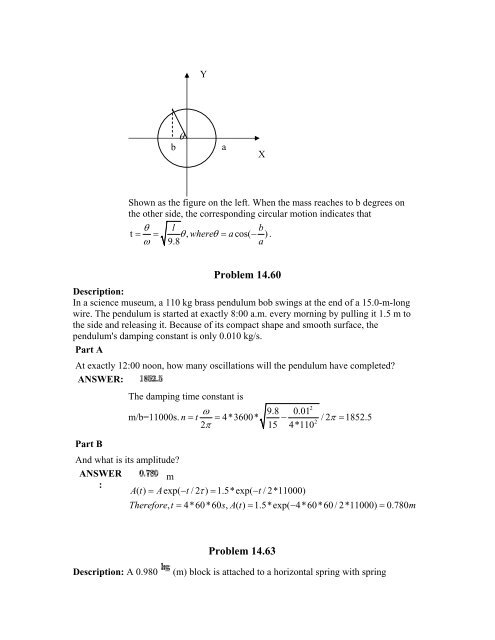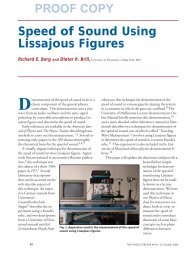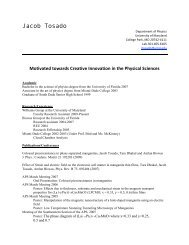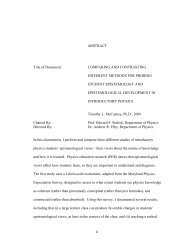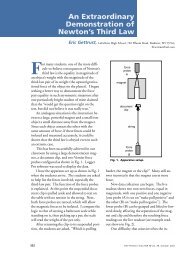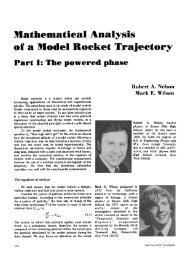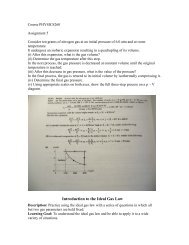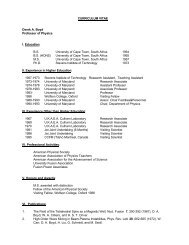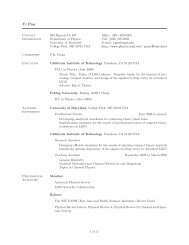Good Vibes: Introduction to Oscillations
Good Vibes: Introduction to Oscillations
Good Vibes: Introduction to Oscillations
Create successful ePaper yourself
Turn your PDF publications into a flip-book with our unique Google optimized e-Paper software.
θ<br />
b<br />
Y<br />
a<br />
X<br />
Shown as the figure on the left. When the mass reaches <strong>to</strong> b degrees on<br />
the other side, the corresponding circular motion indicates that<br />
θ l b<br />
t = = θ, whereθ = a cos( − ) .<br />
ω 9.8<br />
a<br />
Problem 14.60<br />
Description:<br />
In a science museum, a 110 kg brass pendulum bob swings at the end of a 15.0-m-long<br />
wire. The pendulum is started at exactly 8:00 a.m. every morning by pulling it 1.5 m <strong>to</strong><br />
the side and releasing it. Because of its compact shape and smooth surface, the<br />
pendulum's damping constant is only 0.010 kg/s.<br />
Part A<br />
At exactly 12:00 noon, how many oscillations will the pendulum have completed?<br />
ANSWER:<br />
The damping time constant is<br />
m/b=11000s. n t 4*3600*<br />
2<br />
2<br />
9.8 0.01<br />
2<br />
15 4*110<br />
/ 2 1852.5<br />
ω<br />
= =<br />
π<br />
− π =<br />
Part B<br />
And what is its amplitude?<br />
ANSWER m<br />
:<br />
At ( ) = Aexp( − t/ 2 τ ) = 1.5*exp( −t/<br />
2*11000)<br />
Therefore, t = 4*60*60 s, A( t) = 1.5*exp( − 4*60*60 / 2*11000) = 0.780m<br />
Problem 14.63<br />
Description: A 0.980 (m) block is attached <strong>to</strong> a horizontal spring with spring


